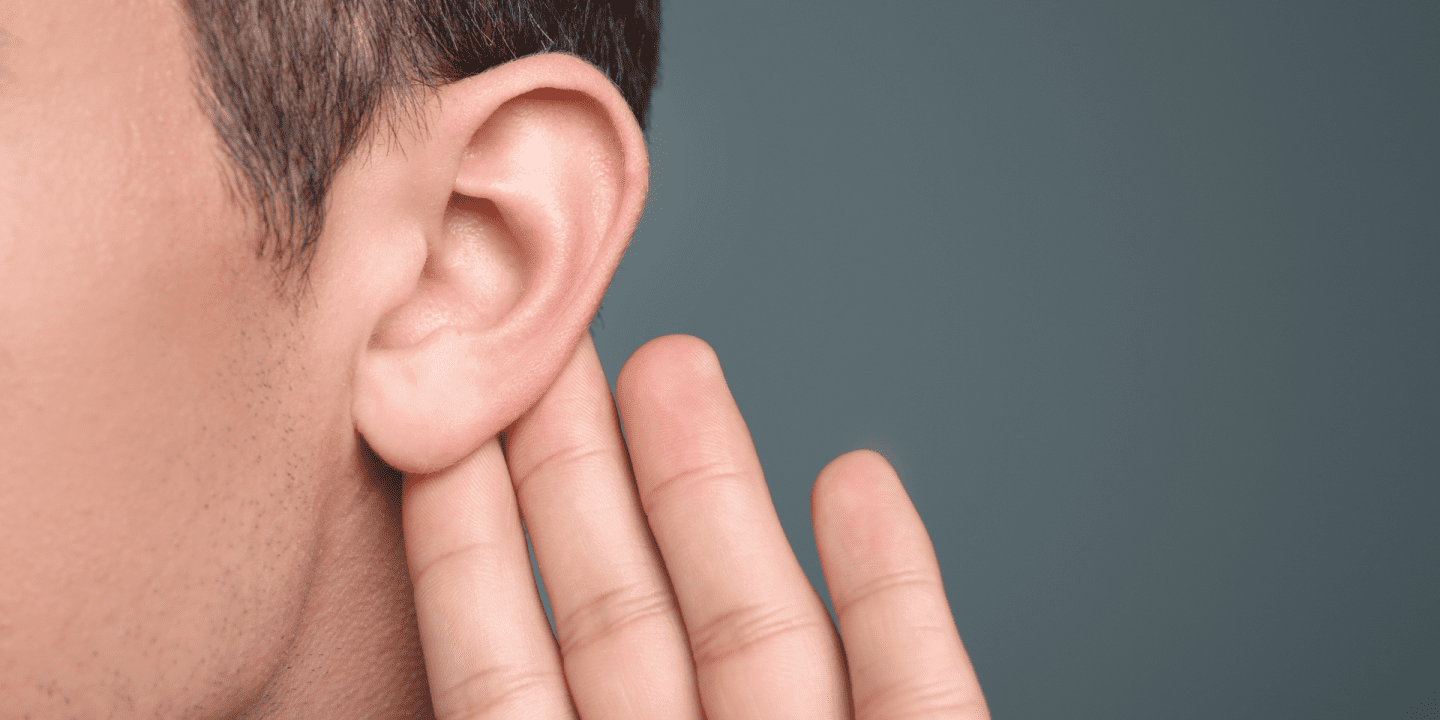Hearing loss is a common condition that affects millions of people worldwide. One type of hearing loss that can be particularly challenging to manage is mixed hearing loss. This occurs when an individual has both sensorineural hearing loss and conductive hearing loss. Sensorineural hearing loss is caused by damage to the inner ear or the auditory nerve, while conductive hearing loss is caused by problems with the outer or middle ear. The dual nature of mixed hearing loss can make it difficult to diagnose and treat effectively. In this blog post, we will explore The Dual Nature of Mixed Hearing Loss How to Manage it Effectively, so you can take steps to protect your hearing and improve your quality of life.
Understand the causes of mixed hearing loss:
Mixed hearing loss is caused by a combination of damage to the inner ear or auditory nerve (sensorineural hearing loss) and problems with the outer or middle ear (conductive hearing loss). It occurs when there is a problem in both the outer and inner ear.
Sensorineural hearing loss is caused by damage to the hair cells in the inner ear or the auditory nerve. This damage can be caused by exposure to loud noise, aging, certain medications, head injuries, or certain medical conditions such as Meniere’s disease or otosclerosis. Sensorineural hearing loss can also be inherited.
Conductive hearing loss, on the other hand, is caused by problems with the outer or middle ear. This can include issues such as earwax buildup, perforated eardrums, or a middle ear infection. Conductive hearing loss can also be caused by problems with the ossicles (tiny bones) in the middle ear, such as otosclerosis, or problems with the Eustachian tube, which connects the middle ear to the back of the throat.
It is important to understand the specific causes of your mixed hearing loss in order to develop an effective management plan. An audiologist or ENT can help you determine the specific cause of your mixed hearing loss and recommend the best course of treatment.
In summary, mixed hearing loss is caused by a combination of sensorineural and conductive hearing loss that can occur due to exposure to loud noise, aging, certain medications, head injuries, certain medical conditions, and genetic factors. Understanding the specific cause of your mixed hearing loss can help you develop an effective management plan.
Recognize the symptoms:

Symptoms of mixed hearing loss can vary depending on the severity of the condition and the specific causes. However, some common symptoms include:
- Difficulty hearing in certain situations, such as when there is background noise.
- Tinnitus, or ringing in the ears.
- Ear pain or discomfort.
- Dizziness or balance issues.
- A feeling of fullness or pressure in the ears.
It is important to be aware of these symptoms and to seek treatment as soon as possible. The earlier mixed hearing loss is diagnosed and treated, the more effective the management plan will be.
It’s also worth mentioning that mixed hearing loss can affect people in different ways, some people may have more difficulty with high-frequency sounds, while others may have more difficulty with low-frequency sounds. Some people may have a greater degree of sensorineural hearing loss and others may have a greater degree of conductive hearing loss. This is why it’s important to visit an audiologist or an ENT to get a proper diagnosis and to ensure that the treatment plan is tailored to the specific needs of the patient.
In summary, recognizing the symptoms of mixed hearing loss can help you seek treatment early on. Common symptoms include difficulty hearing in certain situations, tinnitus, ear pain, dizziness, and a feeling of fullness or pressure in the ears. Each individual may have different symptoms of mixed hearing loss and recognizing them early is important to get the right treatment.
Get a proper diagnosis:

Mixed hearing loss can be difficult to diagnose, as it may be mistaken for solely sensorineural or conductive hearing loss. A proper diagnosis is essential in order to develop an effective management plan.
An audiologist or an ENT (ear, nose, and throat doctor) can help diagnose mixed hearing loss by conducting a thorough examination of the ears, including a hearing test. The hearing test may include pure-tone audiometry, which measures the patient’s ability to hear different frequencies of sound, and tympanometry, which measures the movement of the eardrum in response to changes in air pressure.
In some cases, additional tests may be needed to determine the specific causes of mixed hearing loss. These may include an imaging test such as an MRI or CT scan, or a test to measure the patient’s brainstem auditory evoked response (BAER).
Once the specific causes of mixed hearing loss are determined, the audiologist or ENT can recommend the best course of treatment. This may include hearing aids, cochlear implants, or surgery. It is important to follow the advice of the audiologist or ENT in order to ensure the best possible outcome.
In summary, mixed hearing loss can be difficult to diagnose, it may be mistaken for solely sensorineural or conductive hearing loss. It is important to visit an audiologist or an ENT to get a proper diagnosis. They will conduct a thorough examination of the ears, including a hearing test, and may conduct additional tests such as imaging or BAER. Getting the proper diagnosis is important for developing an effective management plan.
Consider a combination of treatments:
Mixed hearing loss requires a combination of treatments to address both the inner ear and outer/middle ear issues. The specific treatment plan will depend on the specific causes of the mixed hearing loss, as well as the patient’s preferences and lifestyle.
Hearing aids are one of the most common treatments for mixed hearing loss. They can help amplify sounds to make them easier to hear, and come in different styles, such as behind-the-ear, in-the-ear, and in-the-canal. A hearing aid can be programmed to focus on specific frequencies, which can help those with mixed hearing loss to hear some sounds better.
Cochlear implants are another option for mixed hearing loss. These devices are surgically implanted in the ear and can help people with severe sensorineural hearing loss hear sounds more clearly. Cochlear implants use a microphone, a speech processor, and an electrode array to convert sound into electrical signals that are sent directly to the auditory nerve.
Surgery may also be an option for mixed hearing loss, depending on the specific cause. Surgery can be used to remove earwax, repair a perforated eardrum, or address issues with the ossicles in the middle ear. Surgery can also be used to address some causes of sensorineural hearing loss, such as the removal of a benign tumor on the auditory nerve.
In addition to these medical treatments, self-care methods such as avoiding loud noise, protecting your ears from injury, and maintaining a healthy lifestyle can also help manage mixed hearing loss.
In summary, mixed hearing loss requires a combination of treatments to address both the inner ear and outer/middle ear issues. Depending on the specific cause and the patient’s preferences, the treatment plan may include hearing aids, cochlear implants, or surgery. It’s important to consult with an audiologist or an ENT to determine the best course of treatment and to consider self-care methods such as avoiding loud noise, protecting your ears from injury, and maintaining a healthy lifestyle.
Practice self-care:

Along with medical treatments, there are several self-care methods that can help you manage mixed hearing loss. These include:
- Avoiding loud noise: Exposure to loud noise can cause further damage to the hair cells in the inner ear and worsen sensorineural hearing loss. It’s important to avoid loud noise as much as possible and to use earplugs or noise-canceling headphones when necessary.
- Protecting your ears from injury: Trauma to the head or ears can cause mixed hearing loss. It’s important to protect your ears from injury by wearing helmets or ear protection when participating in activities such as sports or construction work.
- Maintaining a healthy lifestyle: A healthy lifestyle can help prevent mixed hearing loss and improve your overall health. This includes eating a balanced diet, getting regular exercise, and not smoking.
- Keeping the ears clean: Cleaning the ears with earbuds can cause damage to the ear canal and eardrum. It’s important to keep the ears clean by gently washing the outer ear with soap and water, and avoiding the use of cotton swabs or other objects in the ear.
- Monitoring the medication: Certain medications can cause mixed hearing loss as a side effect. It’s important to talk to your doctor about any medications you’re taking and to ask about potential side effects, including hearing loss.
- Follow-up with the healthcare provider: Regular follow-up with your healthcare provider is important in order to monitor your mixed hearing loss and make any necessary adjustments to your treatment plan.
In summary, along with medical treatments, self-care methods such as avoiding loud noise, protecting your ears from injury, maintaining a healthy lifestyle, keeping the ears clean, monitoring the medication, and following up with the healthcare provider can also help manage mixed hearing loss. These methods can help prevent further damage to the ears and improve the patient’s quality of life.
Conclusion
In conclusion, mixed hearing loss is a complex condition that occurs when an individual has both sensorineural and conductive hearing loss. Understanding the specific causes of your mixed hearing loss, recognizing the symptoms, getting a proper diagnosis, considering a combination of treatments, and practicing self-care are all important steps in managing mixed hearing loss effectively. It is important to consult with an audiologist or an ENT to determine the best course of treatment and to follow their advice. Regular follow-up appointments are also important in order to monitor the condition and make any necessary adjustments to the treatment plan. With the right approach, mixed hearing loss can be managed, and individuals can continue to lead active, fulfilling lives.
